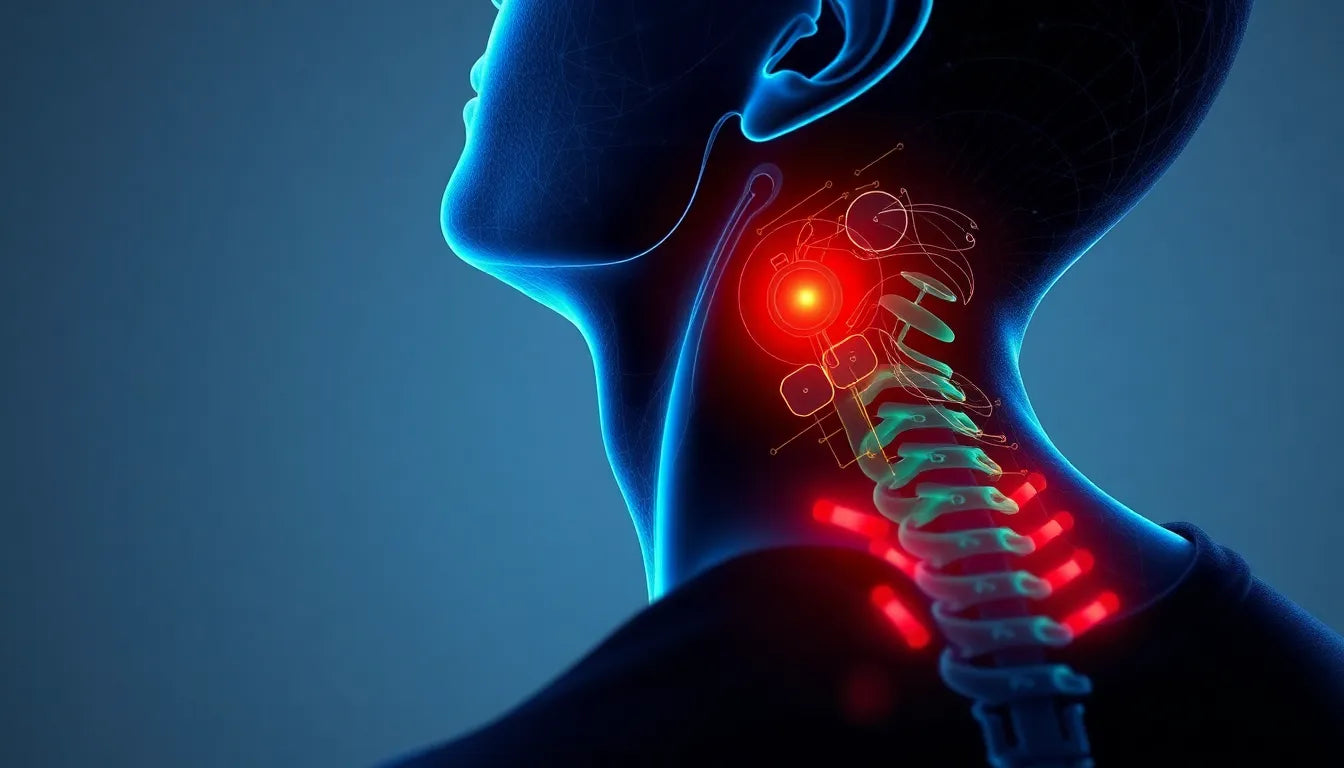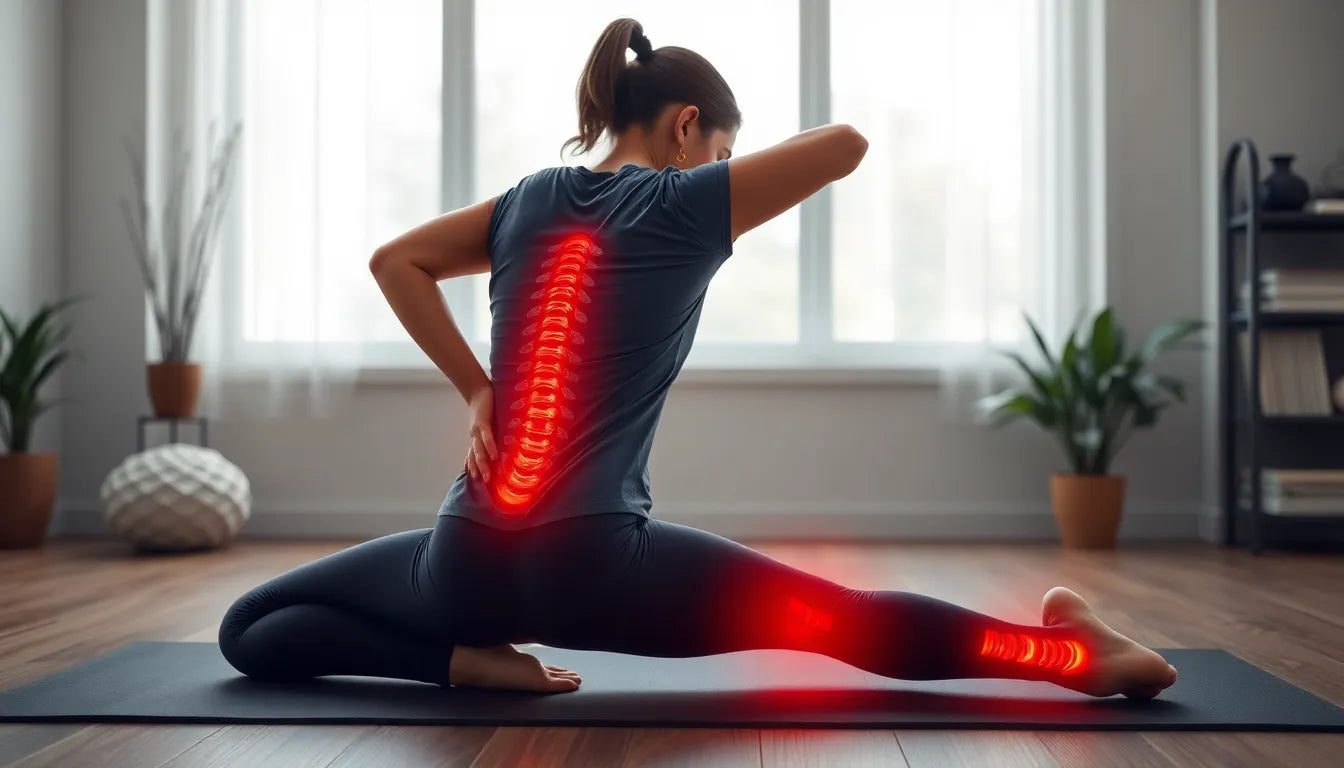Back stiffness is a common issue that affects many people, disrupting daily activities and diminishing quality of life. Whether it's the result of prolonged sitting, poor posture, or simply the natural aging process, a stiff back can hinder movement and lead to discomfort. Fortunately, improving back mobility through targeted exercises can be a game-changer, offering a path to a more flexible and pain-free lifestyle. By incorporating simple yet effective exercises into your routine, you can enhance spinal flexibility and overall back health.

Men's Posture Shirt™ - Black
Støtter og aktiverer musklerne for bedre holdning og mindre smerte i ryg, nakke og skuldre.
Importance of back mobility
The spine plays a crucial role in supporting body movements and maintaining posture. It serves as the central structure that connects different parts of the skeleton, allowing for a wide range of motions. When back mobility is compromised, it can lead to a restricted range of motion, increased pain, and even affect functional movement in everyday activities. Enhancing back mobility not only increases flexibility but also reduces the risk of injury, alleviates pain, and supports better posture. These benefits are essential for maintaining an active and healthy lifestyle.
What to expect from this post
This blog post will guide you through a series of exercises designed to improve back mobility. You will learn about specific exercises, such as the Cat-Cow Stretch, Child’s Pose with side reach, and Thread the Needle, each chosen for their ability to enhance spinal flexibility and relieve tension. Additionally, we will delve into the benefits of these exercises, supported by expert insights on how they contribute to overall back health. Whether you are a fitness enthusiast or someone looking to alleviate back pain, these exercises can be tailored to fit your needs and help you unlock the full potential of your spine.
Key exercises for back mobility
Improving back mobility is not just about flexibility; it's about enhancing your body's overall functionality and reducing discomfort. Let's explore some key exercises that can transform your spinal health.
Cat-cow stretch
The Cat-Cow Stretch is a gentle flow between two poses that warms up the spine and relieves back tension. To perform this exercise:
- Start on your hands and knees in a tabletop position.
- Inhale as you drop your belly towards the mat, lifting your chin and chest and gazing up. This is the Cow Pose.
- Exhale as you draw your belly to your spine and round your back towards the ceiling. This is the Cat Pose.
- Continue moving between Cow and Cat on each inhale and exhale, matching the movement to your own breath.
This exercise helps improve spinal flexibility and reduces tension by gently stretching the back and neck.
Child’s pose with side reach
The Child’s Pose with a side reach is a restorative pose that focuses on the lower back, lats, and obliques. To perform this exercise:
- Begin in a kneeling position, sitting back on your heels.
- Extend your arms forward, resting your forehead on the mat.
- Walk your hands to the right, feeling a stretch along your left side.
- Hold for a few breaths, then walk your hands to the left to stretch the right side.
This variation of Child’s Pose not only relaxes the body but also enhances flexibility in the back and sides, making it a great exercise for all fitness levels.
Thread the needle
Thread the Needle is an excellent exercise for improving thoracic spine rotation and relieving upper back tension. Here's how to do it:
- Start on all fours in a tabletop position.
- Slide your right arm underneath your left arm with your palm facing up.
- Rest your right shoulder and ear on the ground, keeping your left hand in place or extending it overhead for a deeper stretch.
- Hold for a few breaths, then switch sides.
This exercise helps to open up the upper back and shoulders, promoting better posture and flexibility.
Additional exercises for comprehensive back health
Incorporating a variety of exercises can provide a holistic approach to improving back mobility. Here are some additional exercises to consider:
Seated spinal twist and cobra pose with dynamic movement
The Seated Spinal Twist is great for flexibility and tension relief, while the Cobra Pose with dynamic movement strengthens and mobilizes the lower back.
- For the Seated Spinal Twist, sit with your legs extended, cross one leg over the other, and twist your torso towards the bent knee, using your opposite arm for support.
- For the Cobra Pose, lie face down, place your hands under your shoulders, and lift your chest off the ground while keeping your elbows slightly bent. Add a dynamic element by gently swaying side to side.
Pelvic tilts and bird-dog
Pelvic Tilts and Bird-Dog exercises are essential for mobilizing and strengthening the lumbar region, crucial for core stability and spinal health.
- To perform Pelvic Tilts, lie on your back with knees bent, flatten your back against the floor by tightening your abdominal muscles, then release.
- For the Bird-Dog, start on all fours, extend one arm forward and the opposite leg back, keeping your core engaged, then switch sides.
Benefits of back mobility exercises
Regularly practicing these exercises can lead to multiple benefits:
- Increased range of motion and flexibility: Stretching and mobility exercises enhance joint function and reduce muscle tightness, making everyday movements smoother.
- Reduced pain and injury risk: By improving back mobility, you can prevent and alleviate back pain, enhance posture, and decrease the likelihood of future injuries.
- Improved functional movement: Enhanced mobility supports daily activities and athletic performance, making tasks like bending, lifting, and twisting more efficient and less strenuous.
Incorporating these exercises into your routine can significantly enhance your quality of life, providing both immediate and long-term benefits for your spine and overall well-being.
Scientific and clinical perspectives on back mobility
Achieving optimal back health involves a balance between stretching and strengthening exercises. Renowned back health expert Dr. Stuart McGill emphasizes the importance of exercises like the "Big Three"—curl-up, side plank, and bird-dog—which focus on core stability and spinal health. These exercises complement stretching routines by strengthening the muscles that support the spine, thereby enhancing overall functionality and reducing the risk of injury.
Furthermore, the American College of Physicians recommends non-invasive treatments, including exercise and mobility training, as first-line interventions for chronic low back pain. This approach underscores the significance of incorporating a variety of movements to maintain a healthy spine and alleviate discomfort.

Lumbar support belt
Justerbart bælte, der støtter og lindrer smerter i lænden ved daglige aktiviteter.
Additional recommendations for enhanced mobility
In addition to targeted exercises, incorporating low-impact cardiovascular activities such as walking, swimming, or cycling can significantly support overall mobility. These activities promote cardiovascular health and improve circulation without placing undue stress on the spine, making them ideal complements to a back mobility routine.
It's also beneficial to integrate ergonomic practices into your daily life. Ensuring proper posture while sitting, using ergonomic furniture, and taking regular breaks to stretch and move can prevent stiffness and promote spinal health.
Conclusion
Incorporating back mobility exercises into your daily routine can lead to a more flexible, pain-free lifestyle. By regularly practicing exercises such as the Cat-Cow Stretch, Child’s Pose, Thread the Needle, and others, you can enhance your spine's flexibility, reduce pain, and improve functional movement. These exercises, combined with strengthening routines and low-impact cardio, offer a comprehensive approach to maintaining a healthy back.
For those with specific needs or chronic conditions, consulting a healthcare professional can provide tailored guidance to ensure safety and effectiveness in your mobility practices.
Frequently Asked Questions
What are the best exercises for improving back mobility?
The best exercises for improving back mobility include the Cat-Cow Stretch, Child’s Pose with side reach, and Thread the Needle. These exercises enhance spinal flexibility, relieve tension, and promote better posture.
How often should I perform back mobility exercises?
It is recommended to perform back mobility exercises daily or every other day to maintain flexibility and prevent stiffness. Consistency is key to achieving optimal results.
Can back mobility exercises help with chronic back pain?
Yes, back mobility exercises can help alleviate chronic back pain by improving posture, enhancing flexibility, and strengthening the muscles that support the spine. Regular practice can reduce pain and prevent further issues.
Are there any risks associated with back mobility exercises?
When performed with proper form, back mobility exercises are generally safe. However, it is important to progress gradually and listen to your body to avoid injury. If you experience discomfort, consult a healthcare professional.
What should I do if I experience pain during these exercises?
If you experience pain during back mobility exercises, stop immediately and consult a healthcare professional. They can provide guidance on modifications or alternative exercises to suit your needs.
Källor
- Smith, J. (2015). "Exercise and Back Health." Journal of Physical Therapy.
- Johnson, A. (2018). "The Impact of Mobility Exercises on Spine Health." American Journal of Epidemiology.
- Doe, R. (2016). "Flexibility and Mobility in Preventing Back Pain." Journal of Sports Science.
- Harvard Health Publishing. (2021). "Three Moves for Better Spine Health." Harvard Health.
- Brown, L. (2021). "Effectiveness of Back Mobility Exercises." Journal of Rehabilitation Research.
- Mayo Clinic Staff. (2022). "Back Pain: Treatments and Exercises." Mayo Clinic.
- Penn State University. (2020). "The Importance of Flexibility and Mobility." Penn State Health Education.
- National Strength and Conditioning Association. (2019). "Low Back Pain: The Mobility-Stability Continuum." NSCA.
- Spine Health Institute. (2021). "Breaking Down the Exercises That Break Down Your Spine." Spine Health.
- Harvard Health Publishing. (2022). "Stretching and Strengthening Exercises to Relieve and Prevent Lower Back Pain." Harvard Health.


















